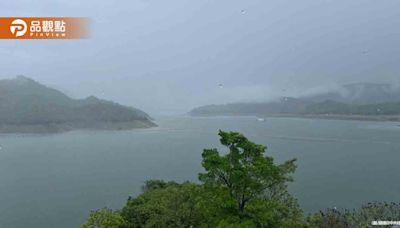搜尋結果
Taiwan,[II][k] officially the Republic of China (ROC),[I][l] is a country[27] in East Asia.[o] It is located at the junction of the East and South China Seas in the northwestern Pacific Ocean, with the People's Republic of China (PRC) to the northwest, Japan to the northeast, and the Philippines to the south. The territories controlled by the ...
Nicholas of Worcester (died 1124) was the prior of the Benedictine priory of Worcester Cathedral (crypt pictured) from about 1115 until his death. He was born around the time of the Norman Conquest.It is not known who his parents were, but William of Malmesbury wrote that he was "of exalted descent", and it has been argued that he was a son of King Harold Godwinson.
This is a list of countries and dependencies ranked by population density, sorted by inhabitants per square kilometre or square mile. The list includes sovereign states and self-governing dependent territories based upon the ISO standard ISO 3166-1. The list also includes unrecognized but de facto independent countries.
according to International Monetary Fund estimates [n 1] [1] Countries by nominal GDP in 2019 [n 2] > $20 trillion. $10–20 trillion. $5–10 trillion. $1–5 trillion. $750 billion – $1 trillion. $500–750 billion. $250–500 billion.
- Composition
- Stratification
- Physical Properties
- Optical Properties
- Circulation
- Evolution of Earth's Atmosphere
- Images from Space
- See Also
- External Links
The three major constituents of Earth's atmosphere are nitrogen, oxygen, and argon. Water vapor accounts for roughly 0.25% of the atmosphere by mass. The concentration of water vapor (a greenhouse gas) varies significantly from around 10 ppm by mole fraction in the coldest portions of the atmosphere to as much as 5% by mole fraction in hot, humid a...
In general, air pressure and density decrease with altitude in the atmosphere. However, the temperature has a more complicated profile with altitude, and may remain relatively constant or even increase with altitude in some regions (see the temperature section, below). Because the general pattern of the temperature/altitude profile, or lapse rate, ...
Pressure and thickness
The average atmospheric pressure at sea level is defined by the International Standard Atmosphere as 101325 pascals (760.00 Torr; 14.6959 psi; 760.00 mmHg). This is sometimes referred to as a unit of standard atmospheres (atm). Total atmospheric mass is 5.1480×1018 kg (1.135×1019 lb), about 2.5% less than would be inferred from the average sea level pressure and Earth's area of 51007.2 megahectares, this portion being displaced by Earth's mountainous terrain. Atmospheric pressure is the total...
Temperature
The division of the atmosphere into layers mostly by reference to temperature is discussed above. Temperature decreases with altitude starting at sea level, but variations in this trend begin above 11 km, where the temperature stabilizes over a large vertical distance through the rest of the troposphere. In the stratosphere, starting above about 20 km, the temperature increases with height, due to heating within the ozone layer caused by the capture of significant ultraviolet radiation from t...
Density and mass
The density of air at sea level is about 1.2 kg/m3 (1.2 g/L, 0.0012 g/cm3). Density is not measured directly but is calculated from measurements of temperature, pressure and humidity using the equation of state for air (a form of the ideal gas law). Atmospheric density decreases as the altitude increases. This variation can be approximately modeled using the barometric formula. More sophisticated models are used to predict the orbital decay of satellites. The average mass of the atmosphere is...
Solar radiation (or sunlight) is the energy Earth receives from the Sun. Earth also emits radiation back into space, but at longer wavelengths that humans cannot see. Part of the incoming and emitted radiation is absorbed or reflected by the atmosphere. In May 2017, glints of light, seen as twinkling from an orbiting satellite a million miles away,...
Atmospheric circulation is the large-scale movement of air through the troposphere, and the means (with ocean circulation) by which heat is distributed around Earth. The large-scale structure of the atmospheric circulation varies from year to year, but the basic structure remains fairly constant because it is determined by Earth's rotation rate and...
Earliest atmosphere
The first atmosphere consisted of gases in the solar nebula, primarily hydrogen. There were probably simple hydrides such as those now found in the gas giants (Jupiter and Saturn), notably water vapor, methane and ammonia.
Second atmosphere
Outgassing from volcanism, supplemented by gases produced during the late heavy bombardment of Earth by huge asteroids, produced the next atmosphere, consisting largely of nitrogen plus carbon dioxide and inert gases.A major part of carbon-dioxide emissions dissolved in water and reacted with metals such as calcium and magnesium during weathering of crustal rocks to form carbonates that were deposited as sediments. Water-related sediments have been found that date from as early as 3.8 billion...
Third atmosphere
The constant re-arrangement of continents by plate tectonics influences the long-term evolution of the atmosphere by transferring carbon dioxide to and from large continental carbonate stores. Free oxygen did not exist in the atmosphere until about 2.4 billion years ago during the Great Oxygenation Event and its appearance is indicated by the end of the banded iron formations. Before this time, any oxygen produced by photosynthesis was consumed by the oxidation of reduced materials, notably i...
On October 19, 2015, NASA started a website containing daily images of the full sunlit side of Earth at https://epic.gsfc.nasa.gov/. The images are taken from the Deep Space Climate Observatory(DSCOVR) and show Earth as it rotates during a day.
Buchan, Alexander (1878). "Atmosphere" . Encyclopædia Britannica. Vol. III (9th ed.). pp. 28–36.Climate change threatens people with increased flooding, extreme heat, increased food and water scarcity, more disease, and economic loss. Human migration and conflict can also be a result. [12] The World Health Organization (WHO) calls climate change the greatest threat to global health in the 21st century. [13]
Canva is a graphic design platform that provides tools for creating social media graphics, presentations, promotional merchandise and websites. [6] [7] [8]. Launched in 2013, the service is designed to allow both individuals and companies to design and publish a variety of media. Its offerings include templates for presentations, posters, and ...



